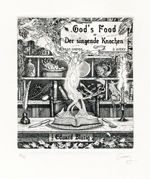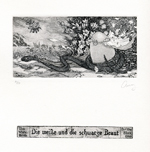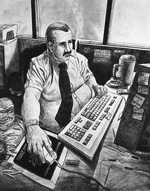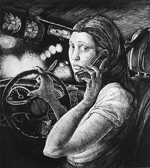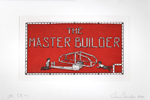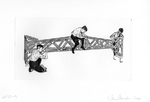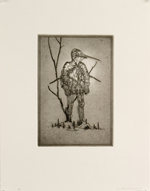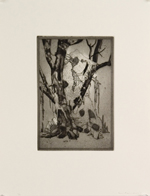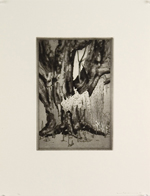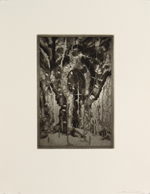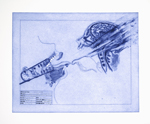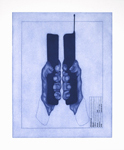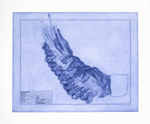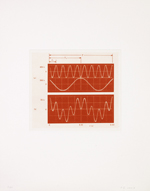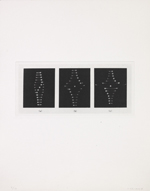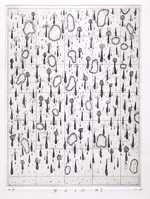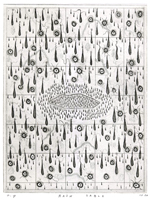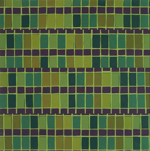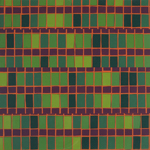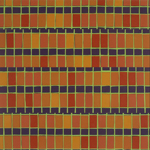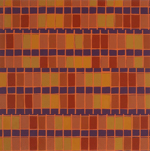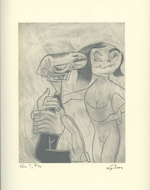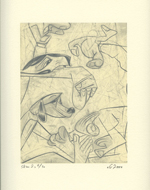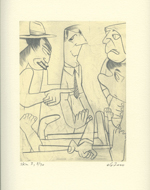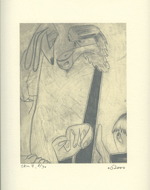|
Humanities and Social Sciences Library > Collections > Print Collection > Multiple Interpretations Multiple InterpretationsArtists: A–GKevin Appel (American, born 1967) In his paintings and in this suite of prints, Kevin Appel pays homage to the cool, futuristic aesthetic of 1950s and 1960s Modernist architecture in Southern California, as featured in the journals House and Garden and Sunset. In House Rotation Blue, Appel captures in aquatint and photoengraving the luminous transparency of an imaginary glass structure, viewed in rotation from the west, north, east, and south. Appel’s work has been considered an ironic and wry commentary on “utopian sterility” as perceived by an artist too young to have experienced firsthand the heyday of Modernism. The accompanying color photocopy includes the complete house plan, marked in red to indicate the four viewpoints shown in the prints.
David Avery (American, born 1952) A dealer urged David Avery to create a children’s book for adults around the same time that the artist came across a list of 200 stories collected and transcribed by the Brothers Grimm. Avery invited some friends—artists, writers, musicians, and collectors—to each choose five favorite titles, and then made a new list, he explained, from “the first unique title from each of them. The personality and interest that each participant exhibited in their approach to this request became a part of the work itself … this project ended up moving towards a more collaborative activity, and it was interesting to discover that the original materials that the Bros. Grimm utilized … were derived from oral folk traditions created for adults by adults in communal work situations.” The titles provided Avery with “a point of departure from which the imagination could spin its own tales.” Each etching is a miniature universe filled with encyclopedic detail. Avery acknowledges his admiration for the German artist Max Klinger (1857–1920), and these finely worked etchings also suggest a kinship with the work of early 19th-century German Romantic printmakers, including those in the circle of the Nazarenes.
Christiane Baumgartner (German, born 1967) To visualize time, speed, and duration, Christiane Baumgartner here combines a relatively new technology, video, with the oldest printmaking process, the woodcut. First, from inside a moving car, she filmed a landscape with a video camera. She then isolated twenty-five images captured in one second of video and translated the individual, sequential pictures into flickering patterns of horizontal woodcut lines, which reinforce the feeling of speed. On view are the first consecutive twenty freeze-framed stills from the “one-second” suite. 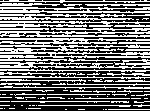 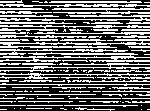 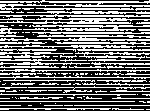 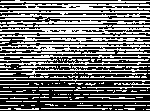 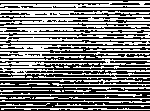
Sandow Birk (American, born 1964) Sandow Birk’s social and political commentaries carry with them the authority of art history. George Bellows (specifically his prints in the San Diego Museum of Art), Daumier, and Rembrandt are among the artists whose work Birk quotes in Leading Causes of Death in America. His slovenly, misshapen, and overweight subjects address a range of health problems and ill-advised lifestyles: cancer, flu, heart attack, accidents, diabetes, alcoholism, and stroke. For Birk, “the things that cause death in America are avoidable health risks whose effects are down the road and not really seen, even though they’re right in front of us.” It seems appropriate that Birk etched his warnings; the action of acid on a metal plate suits his corrosive message.
Chris Burden (American, born 1946) Perhaps best known for his early performance pieces (in his performance Shoot, in 1991, he asked a friend to shoot him in the arm), over the years Chris Burden has made conceptual sculpture that fuses technology, architecture, and engineering in an effort to explore how things work. In the 1990s, inspired by an illustrated book on Mexican railroads, he studied old Meccano and Erector Set manuals, drew his own plans, and constructed several Meccano and Erector Set reproductions of 19th- and 20th-century bridges (described by one critic as “too big to be a boy’s toy project, and too small to be useful”). Each is, in effect, a sculpture and a testimonial to the concept of “Man as Builder.” In The Master Builder, his version of Meccano and Erector Set manuals, Burden includes diagrams of different types of bridges, his own construction sketches, and a reproduction of one of his realized miniature bridges. Burden has said that he “like[s] the metal constructions of Meccano because it becomes a system in itself. Even though they are toys, they have a certain built-in logic structure that is very clear and satisfying for me.”
Ernesto Caivano (Spanish and American, born 1972 in Spain, lives in New York) Ernesto Caivano, who has contributed to a recent renaissance in drawing, asserts that he creates “fairy tale[s] for adults” that deal with “the relationship between nature and humans in the past, future and present, using elements from mythology and folklore, and adopting ideas from science, fiction and technology.” These tales have “echoes of a creation myth, but without the godhead.” In Caivano’s suite Knight Interlude, the hero is a man in a suit of armor with a beak-like helmet (a reference to Caivano’s mythical birds, “philapores,” which along with a knight and a princess appear in his ongoing narrative After the Woods). The knight gradually dissolves and is transformed into a tree, only to be resurrected in the twelfth and final plate as a glowing silhouette. The knight’s gradual union with nature is a somber and mysterious process, an allegory, perhaps, on death and rebirth, and a reminder that man and nature are interdependent, with man as the caretaker of his environment.
E. V. Day (American, born 1967) E. V. Day has explored gender and sexuality in her installations, created with wit and gusto from such materials as torn evening dresses, a wet suit, G-strings, and thongs, to literally explode female stereotypes and the social and political gender status quo. In this series of prints, Day associates masculinity with the “mastery of man over nature and the conquest of new frontiers through technology.” The etchings are modeled on blueprints, a reminder that architecture is a male-dominated profession. Technology, which she also considers to be a signifier of maleness, is represented by the cell phone, seen here as a tool to excite and satiate man’s desire. Twin Towers—Double Fisted—2001 clearly refers to the World Trade Center; this portfolio was completed before the attacks on the towers on September 11, 2001.
Mark Dion (American, born 1961) and Marc Dion, in collaboration with British artist Robert Williams, borrowed the scheme of the family tree to demonstrate how classification systems have been used to give order to a complex world. In Et in Arcadia Ego, Dion presents a hierarchy of terms referring to utopias, the afterlife, and other planes of existence. In Hic Existo Monstrum, he lists mythological monsters, among them, the names of bogeymen invented by the artists’ children. In Theatrum Universale Omnium Historia Naturae, he devises a visual history of those who advanced science. In Summum Bonum Quod Est Magiae, Cabalae, Alchymae et Artis, he acknowledges the interrelationship between art, science, alchemy, and mysticism, mentioning artists from Dürer to Jannis Kounellis and Louise Bourgeois. Into each of these lithographs Dion incorporated details from four 18th-century prints that he found at an Antwerp flea market. He believes there was originally a fifth print in that series, and should he find it, he and Williams intend to make an additional lithograph to complete their suite.
Olafur Eliasson (Danish, born 1967, lives in Berlin) Best known for the Weather Project (2003), his installation in the Tate Modern’s Turbine Hall, Eliasson is intrigued by how we perceive the world and by the mechanisms employed to observe and interpret the physical universe. He has used mirrors, glass, water, steam, wind, light, and other elements from nature, often in concert with technology, to create dramatic and lyrical equivalents of the natural world. His ambition for his site-specific sculptures and installations: to guide the viewer to an awareness of “seeing oneself seeing.” In Vibes he celebrates the beauty inherent in wave patterns, diagrams, and graphs usually associated with scientific analyses to represent natural phenomena. The images, seemingly visualizations of the invisible, are austere yet elegant. In a number of the prints Eliasson takes advantage of the subtlety of continuous tone possible with photogravure (a photographic etching process) to simulate effects of glowing light.
Tony Fitzpatrick (American, born 1958) Actor, poet, radio personality, former semi-professional boxer, and tattoo artist, Tony Fitzpatrick in his works on paper usually offers a colorful and opulent encyclopedia of imagery, a virtual bestiary of animals, plants, insects, pin-up girls, and monsters that recall elaborate tattoos, intricate tarot cards, cartoons, and medieval and Persian miniatures. While The Rain Quartet is in keeping with Fitzpatrick’s penchant for complex, overall design, the spirit of this suite of black-and-white etchings is distinctly different from his usually boisterous celebrations of pattern and color. This was a very personal project for Fitzpatrick, a coming-to-terms with his father’s terminal illness and death. The rain could also be tears.
Wayne Gonzales (American, born 1957)
Elliott Green (American, born 1960) Elliott Green celebrates drawing in Sketch Movies with Stills. Layers of pentimenti, seeming false starts, erasures, and evidence of vigorous reworking give his strange dramas (they have been described as “Surrealism meets Looney Tunes”) a scarcely contained vitality. Green drew the twenty-four images on clear plastic film; each of them was then transferred photomechanically to a metal plate and printed as a lithograph. On a CD-ROM included in the portfolio, Green records the making of twelve of the prints (the twelve that are on view here). He begins each image with a single line and, as documented in a series of stills, continues to draw and erase until he realizes the configuration that appears as a print in the portfolio. The video is then reversed until the image is again reduced to the initial line, whereupon Green begins the process with a different line, which eventually evolves into another print in the portfolio. |



